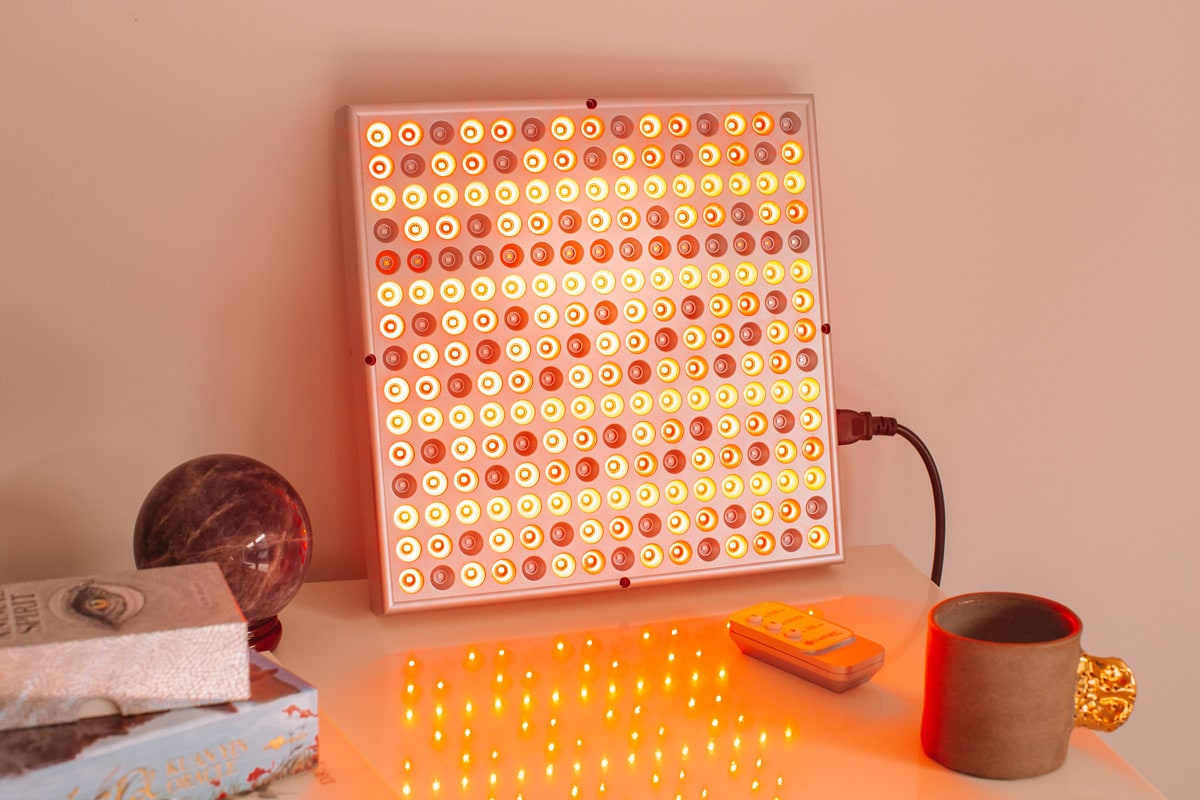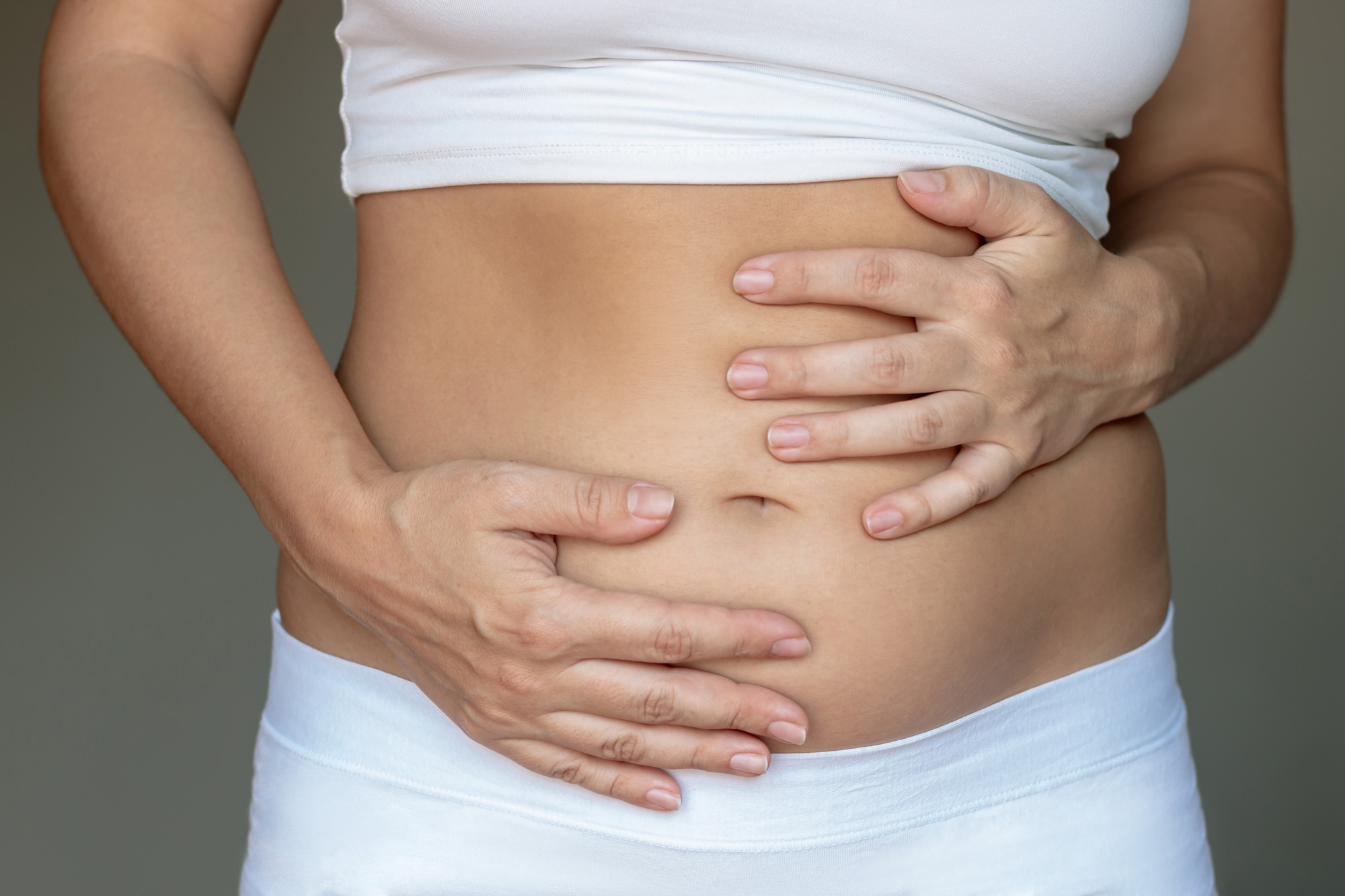If you’re living with Hashimoto’s thyroiditis, you might be interested in exploring red light therapy as a supportive addition to your care plan. Red light therapy is a subset of low-level light therapies and is easily accessible for home use. Emerging research suggests that low-level laser therapy (LLLT)—also known as photobiomodulation—is a gentle, non-invasive treatment that may help improve thyroid function when used alongside your current treatment.
In this blog, we’ll explore the research on LLLT for thyroid health, then look at how red light therapy might be used at home.

What is low-level laser therapy?
Low-level laser therapy (LLLT) is a gentle, non-invasive treatment that uses specific wavelengths of light—usually red or near-infrared—to support healing, reduce inflammation, and enhance cellular function. The laser light used in LLLT is precise (targeted) and coherent (focused rather than diffuse), allowing it to penetrate deeper into tissues.
Unlike high-powered lasers used in surgery, LLLT doesn’t cut or heat tissue. Instead, it delivers low-intensity light that is absorbed by the body’s cells—particularly the mitochondria, which are the energy powerhouses of the cell. When stimulated by light, these mitochondria produce more ATP, the cellular fuel that helps tissues function more efficiently and recover more effectively.
This energy boost helps your cells in several important ways:
- Repair themselves more effectively
- Grow and regenerate when needed
- Carry out their normal functions better
- Produce the DNA, RNA, and proteins they need to stay healthy
The therapy also has protective effects, potentially shielding cells from harmful compounds that can accumulate during illness and cause unnecessary cell damage.
Beyond cellular benefits, red light therapy offers anti-inflammatory effects throughout the body. It can reduce swelling, ease discomfort, and may boost collagen production—essential for strong, healthy tissues.
Medical researchers have studied this therapy for various conditions including back pain, stroke recovery, arthritis, wound healing, and neurodegenerative diseases. Now, exciting research is emerging around its potential for thyroid disorders.
The Research: What studies show for thyroid health
A quick peruse of the research, if you will 😉 When researchers tested laser therapy on animals with healthy thyroid function, the treatment improved blood flow to the gland and helped balance T3 and T4 hormone levels. In animals with hypothyroidism, the laser restructured thyroid cells and altered the gland’s size while boosting hormone production.
LLLT has also been shown to significantly reduce levels of reactive oxygen species (ROS) within the thyroid gland. By lowering oxidative stress, it helps protect the gland from damage and supports tissue healing and recovery.
For example, in animals with radiation-induced thyroid damage, a 14-day course of LLLT accelerated thyroid recovery and led to a downregulation of the antioxidant enzyme superoxide dismutase (SOD). This decrease in SOD activity was likely due to a reduction in oxidative stress, with fewer free radicals needing to be cleared [Source].
Now let’s look at the human studies—this is where things really start to get exciting for those of us dealing with Hashimoto’s.
The 2010 pilot study
The first study to explore laser therapy for Hashimoto’s was a 2010 pilot trial. Researchers tested it on people with hypothyroidism caused by Hashimoto’s and saw some promising results: thyroid tissue appeared healthier on ultrasound, TPO antibody levels dropped, and many participants were able to reduce their thyroid medication over time [Source].
The 2013 breakthrough study
The same research team then conducted a larger randomised controlled trial with impressive results. Participants with Hashimoto’s received laser therapy twice weekly for 10 weeks and experienced:
- Higher thyroid hormone levels
- Reduced medication needs (48% no longer needed levothyroxine at 9 months!)
- 25% increase in gland volume
- Significantly lower TPO antibody levels
[Source].
Long-term safety confirmed
Finally, in 2018, the team conducted a six-year follow-up study confirming that laser therapy was safe for treating Hashimoto’s, finding no increase in thyroid nodule development—an important safety concern they specifically monitored [Source].
Recent research supports earlier findings
Newer studies have continued to back up those early findings—with even more encouraging results. A 2020 study of 42 autoimmune thyroiditis patients showed that laser therapy helped rebalance their immune systems, with positive changes lasting about 4 months in 78% of patients [Source].
An even larger study involving 350 Hashimoto’s patients compared laser therapy plus supplements (vitamin D, iron, and selenium) versus supplements alone. The laser therapy group showed dramatically better results, with researchers finding that laser therapy was:
- 70 times more effective at improving T3/T4 ratios
- 15 times more effective at reducing medication dosages
- And associated with significant improvements in quality of life
[Source].
What “improved quality of life” actually means
When studies mention “better symptom management” or “improved quality of life,” they’re talking about real, tangible improvements you can feel:
- Increased energy levels
- Reduced throat discomfort
- Better cold tolerance
- Stronger immune function
One study even found significant weight loss in women with Hashimoto’s! [Source].
Red light therapy for Hashimoto’s at home
As mentioned earlier, the research cited has used professional-grade, cold low-level lasers that typically emit near-infrared wavelengths between 810–850 nm—penetrating deeper into tissues than red light (usually around 630–660 nm).
These medical lasers are more powerful and precise than consumer red light panels, which use LEDs (Light Emitting Diodes) rather than lasers.
LEDs emit non-coherent (diffuse) light, which means they generally penetrate tissue less deeply than coherent laser light, and the dose is harder to control—making it difficult to exactly replicate clinical protocols at home.
However, many people report benefits from at-home red light devices, especially those that combine both red and near-infrared wavelengths. These LED panels are certainly more readily accessible to us as consumers, making them an easy option to try at home.
While the results may not mirror clinical outcomes exactly, they may still offer meaningful support when used consistently and correctly.
If you want to try red light therapy:
- Follow your device’s manufacturer guidelines for timing and frequency
- Most recommend 10-20 minutes, several times per week
- Position the device near your neck/thyroid area
- Be consistent with your routine!
I personally use the Trulight Energy Square, which I ordered from the US. We also have excellent local options now, such as those from Block Blue Light, where you can save 10% with the code LAUREN.
Safety considerations
Red light therapy is generally considered low-risk, but like with anything new, we’re still waiting on more long-term research to fully understand its safety and effectiveness. In the meantime, here’s how to stay on the safe side:
- Always wear protective eyewear during use
- Monitor your thyroid function with regular blood tests
- Avoid use during pregnancy
- Discontinue if you experience adverse effects (some people may have temporary, mild skin reddening)
Final thoughts
While research is still unfolding, the current evidence around red light therapy is genuinely exciting. It’s safe, non-invasive, and shows real promise for supporting thyroid function alongside your existing treatment.
For many women navigating the daily ups and downs of autoimmune thyroid disease, it’s definitely worth a try!
Lauren.





Comments +